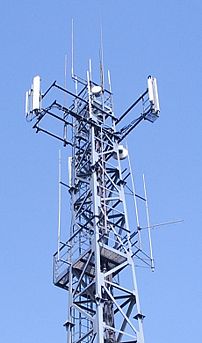
- Image by RafeB via Flickr
Over the past few weeks I got a chance to put the relatively new Nokia 5800 XpressMusic through it’s paces and see how it holds up against my current Nokia N95. This was a pretty important trial run for me as my N95 is starting to take strain physically, although internally it’s still better than ever. Presumably my next upgrade will be to the Nokia N97, but with the cellphone companies doing their best to price-gouge consumers, I was glad to get the chance to see what was available lower down in the more affordable regions of the Nokia range.
The first thing I did was to use the built-in migration tool to migrate every stitch of data from my N95 to the 5800. This is the first time I’ve had that ability directly between phones, and I must say its super-handy. I did have a number of hiccups getting the connection working at first, and these were only solved by specifically setting the direction of data transfer to send from the N95 to the 5800.
Quickly after that I checked the firmware version, which sadly showed firmware 11.0.008 (RM-356). Nokia early-release firmwares are traditionally known to be slower and less feature filled, so I quickly navigated with the comfortable touch screen to the Over-The-Air update utility, which simply didn’t work. True, that could also have been the fault of the Vodacom pay-as-you-go card I’d been using at first.

- Image by kaosproject via Flickr
Fortunately I could run Nokia Software Updater from my PC, which showed that firmware version 20.0.012 was available to South African users. This promised a significant set of improvements. A few hours later the phone was up to the latest and greatest software version, which seemed to provide a nice set of comfortable tweaks and general improvements. Another bonus was the user-data preservation feature, which meant I didn’t have to restore all my user data after the phone update.
The GPS at first seemed to work really-quickly – but I was deceived – it takes better advantage of A-GPS than my N95 – but the more I used the GPS the more it reminded me of my current, slow, N95, so nothing new there. Give it ten minutes and it’ll figure out where you are, or you’ll be at your destination. For some reason it’s still a long way off the performance of the GPS that comes in the Nokia 6210 Navigator.
The phone has loads of other smart features – 16:9 video playback, reasonable speakers (disappointing for a ‘music’ phone), good vibrating touch feedback from the screen, a fairly responsive accelerometer, handwriting recognition, and it comes with a plectrum and a proper stylus, but in the end the most useful and fastest method of input turned out to be plain-old t9 predictive text. The QWERTY solutions were too slow and could not be used one-handed. One of the best funky features that has been thrown in the S60 package is the ability to silence a call by simply turning the device face down! Very cool. Compared to my N95 the camera is rubbish in anything less than broad daylight, but it still beats the iPhone camera hands down!
There are still issues that could have been worked out before this phone was released:

- Image by kaosproject via Flickr
– The silly plastic clips holding the battery cover in place are guaranteed to break within a year or so, ultimately turning the shiny candy-bar format phone into a sticky-sellotaped shiny candy-bar format phone.
– The placement of the memory stick and SIM card slots is alright, if a little bit weird.
– No USB charging. Really, Nokia. It’s 2009 already. Get it right. I don’t give a damn about your charger-sales business. The phone is expensive enough to cover that.
– A phone cover is included, but useless for anything other than rendering the phone completely inaccessible.
– The phone feels like it should slide open. Everyone I handed it to had a first instinct to try and slide it open. That’s a sure sign of a design flaw.

- Image by kaosproject via Flickr
– Greasy fingerprint smudges on the screen – not Nokia’s fault, but the curse of the modern cellphone I guess.
Basically, the Nokia 5800 XpressMusic gets two-thumbs up – the overall package is very agreeable to me as a Nokia user and proved a pleasure to use as a primary phone for the few weeks I spent using it.
[Tempting though the 5800 may be, I think my heart is still set on the N97]
Related articles :
- Group Review: Cases for the Nokia 5800 XpressMusic (allaboutsymbian.com)
- How to use Facebook on the Nokia 5800 XpressMusic (allaboutsymbian.com)


![Reblog this post [with Zemanta]](https://i0.wp.com/img.zemanta.com/reblog_e.png?w=580)